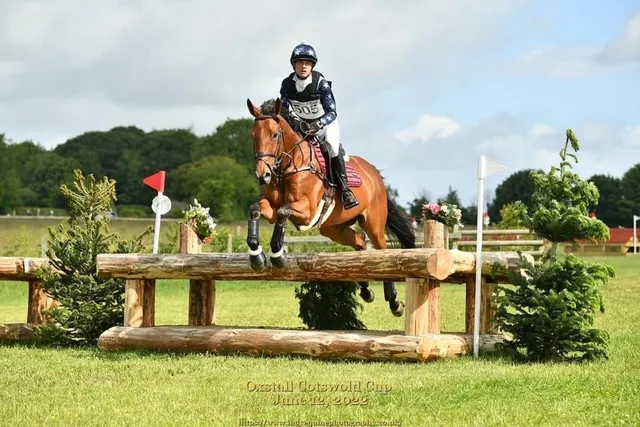The PRB HORSEBOXES Cotswold Cup
YOUR 2025 CHAMPIONSHIP EVENT GUIDE
This guide has been crafted to help anyone doing their first three (or two) day event. Whilst we have tried to cover all bases, if you have further queries, please seek professional advice or ask us!
GETTING ON SITE INFORMATION
Riders’ WhatsApp Group

All CIRENCESTER PARK riders are invited to a dedicated WhatsApp group where important information, any changes, timings and anything & everything else you need to know will be posted. Please use the above QR code to join the group at your earliest opportunity so you don’t miss any early messages.
Briefing
There will be a briefing at the start of the event, you are strongly advised to attend this and ask any questions that you may have. Please note that it is not possible for the organisers to give out maps for the routes on Phases A and C prior to this briefing. You will need to make time once the routes have been confirmed to make sure you know exactly where you are going!
Packing List
This should include everything that you would normally take to a one day event plus the following: (please also cross reference with the kit list for the ten minute box, as there will be necessary duplication). This list is for guidance and individuals will have their own additions, so if you think you might need something then take it with you. If you don’t have this there will be trade stands at the event where you will be able to purchase what you need. But be aware that they may not be there until dressage day.
- Mucking out kit, suitable for shavings bed
- Wheelbarrow and something to line your wheelbarrow with to enable you to use for fetching and carrying as well as mucking out
- Water buckets for the stable, in addition to those required for washing off – the stable will be bare of all fixtures and fittings – so you will need to supply what you need and the ability to secure it if you want it off the ground
- Bridle hooks to clip on to the outside of the stable area for hanging your headcollars and bridles on etc
- Extra sponges for washing off
- Tack cleaning equipment
- Steps to stand on for plaiting / mounting etc
- Copious amounts of bailer twine, or bungee cords – to be used for any and all manner of eventualities
- Spare bridle or at least spare pair of reins – especially if you use the same bridle for all three phases
- X3 dressage numbers – x1 for headcollar, x1 for bridle and x1 for numnah – to be worn at all times when the horse leaves the stable
- Spare headcollar and lead ropes – as it will be necessary to have headcollars and lead ropes in multiple places simultaneously to cover for potential eventualities
- Spare pair of stirrup Irons and Leathers
- Spare stud kit and studs – will be needed at the end of the steeplechase and in the 10 minute box
- Everyday numnahs as well as competition numnahs – for when you are exercising
- Hard feed and hay or haylage is not provided please bring whatever your horse needs
- Lunge line
- Stable Rugs in addition to the usual coolers etc plus a waterproof rug for use when grazing, prior to the trot up etc.
- Everyday riding kit for you as well as your competition riding kit
- Trot up attire for you
- Human first aid kit
- Equine first aid kit – thermometer, poultice, suitable creams for minor wounds, salt and cotton wool
- Fold up chair
- Mountain bike for getting between phases and around the event site
Arriving at the event
You can arrive at Cirencester Park from 3pm on Thursday 25th September.
On arrival at the event site, you will need to have your passport ready to give to the stable manager who will keep hold of it until you are ready to leave. It is at this point that you will find out where your stable is. Please do not unload or go searching for your own stable prior to meeting the stable manager.
It will really help you if you have packed your lorry or vehicle in such a manner that you can take the immediate stuff that you need to the stable before you even unload your horse. This would include water buckets and a haynet etc. Please bear in mind that you can end up parked a long way away from where your stable is and that wherever you park this is where you will remain for the duration of the competition, and this is where you will be setting up site.
Please allow plenty of time for arriving, finding your stable, unpacking etc. All of this takes considerably longer than one thinks as you have a lot of stuff! There will also be others arriving simultaneously so things such as filling water buckets etc can take longer simply because there might be a queue.
Stabling
If you have chosen to stable, you will have an allocated stable for your horse for the duration of the event. This will come with 2 bales of shavings, but you may wish to bring or buy extra and add to it during the event, especially if you are there for several nights. The stable will come empty with no fixtures or fittings and you will be responsible for supplying water buckets, haynets etc. You will be able to leave stuff outside of your stable and so it is advisable to have a trunk or box with which to keep it watertight. You will be responsible for mucking out your stable daily. There will be water sources in the stable area, but as several people will be filling up multiple buckets in the same place these are pinch points that can get extremely muddy. There will be allocated areas for muck heaps in various points within the stable area. These will be for muck only. Please ensure that you put all non-compostable rubbish in the bins provided. There will be guidance as to the state you need to leave your stable in on departure. Please ensure you adhere to this.
Stable Manager
This is a trailer on the edge of the stable area that is entirely separate from the main event secretary. This will become your point of call for all necessary information and should be your first go to place in the event of a problem with your horse, your competition, your stabling or your parking. Usually there is an information board here with all new and current information placed on it; eg maps of roads and tracks, timings when everything starts and finishes, running orders, maps of where you can ride out, timings for when stewards are available to monitor practice jumping arenas etc.
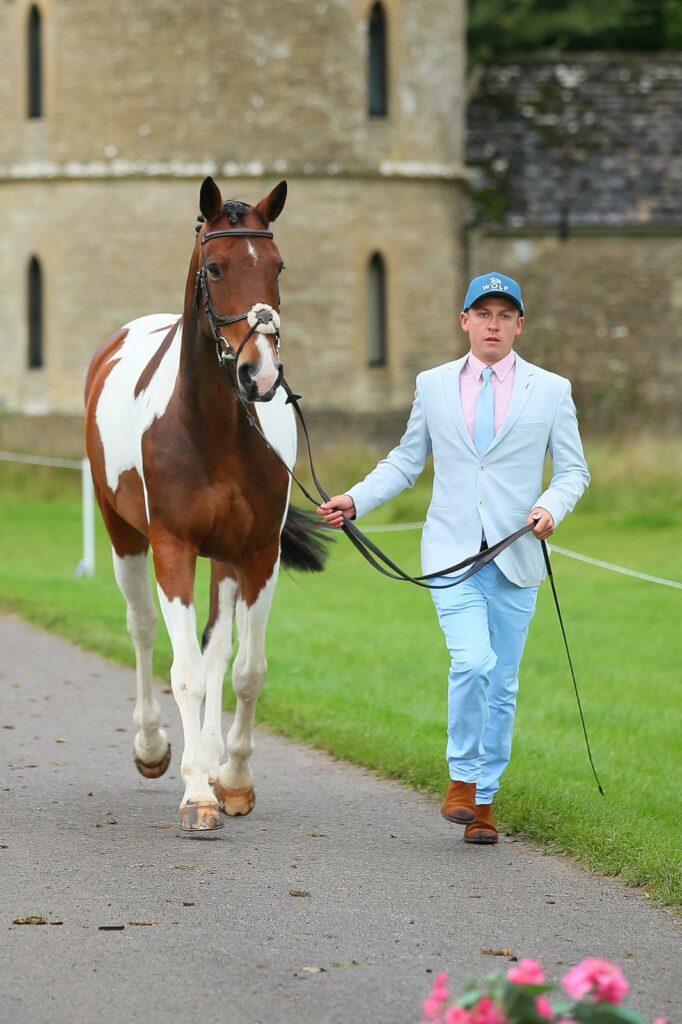
Trot up
First and foremost, this is a welfare check not a fashion parade. Crucially make sure you can actually run in whatever footwear you decide to choose. That said there will be a prize for the best dressed at the trot up.
Your horse must wear a dressage legal bridle with a number on the bridle, and nothing else. No boots etc. Although he may wear boots and rugs etc whilst walking around the collecting area. You may trot up with a long whip if necessary. There will be a running order – usually numerical order and there will be times. From the start time if you allow one minute per horse you will have a pretty good guestimate as to what your time will be. There will be a collecting area, the same way as there is for the other phases.
Crucially – you will need to practice running and standing your horse up in advance. It is possible to make a really bad job of this and to make a sound horse look lame simply by not knowing what you are doing. If in doubt seek help. You can also watch videos of trot ups from major three day events to help you.
There will be two trot ups; one before you start and one on the final morning before the showjumping. You are welcome to ride or hand walk them, to loosen them up before the trot up on the Sunday morning. There will be allocated areas where you can ride them.
When you trot up you will be asked to walk forward and stand your horse up, side on in front of the Ground Jury. You will then walk away for a few steps and then trot until the turning point. Return to walk, walk around the turning point (most often flowers) and then trot back continuing past the Ground Jury on the side. If there is a problem, you will be asked to go to the Holding box where there will be a vet present. The vet in the holding box will then advise as to what to do from there. Your support team is not allowed to access the holding box.
Dressage Phase
Timings for this will be available on eventing scores as usual. This will take place on a separate day to your jumping and should be treated as a completely separate day, meaning that you might need to work your horse differently in order to settle it, as it will be fitter than you are perhaps used to.
Your dressage test will take a little longer to complete than the normal one day tests.
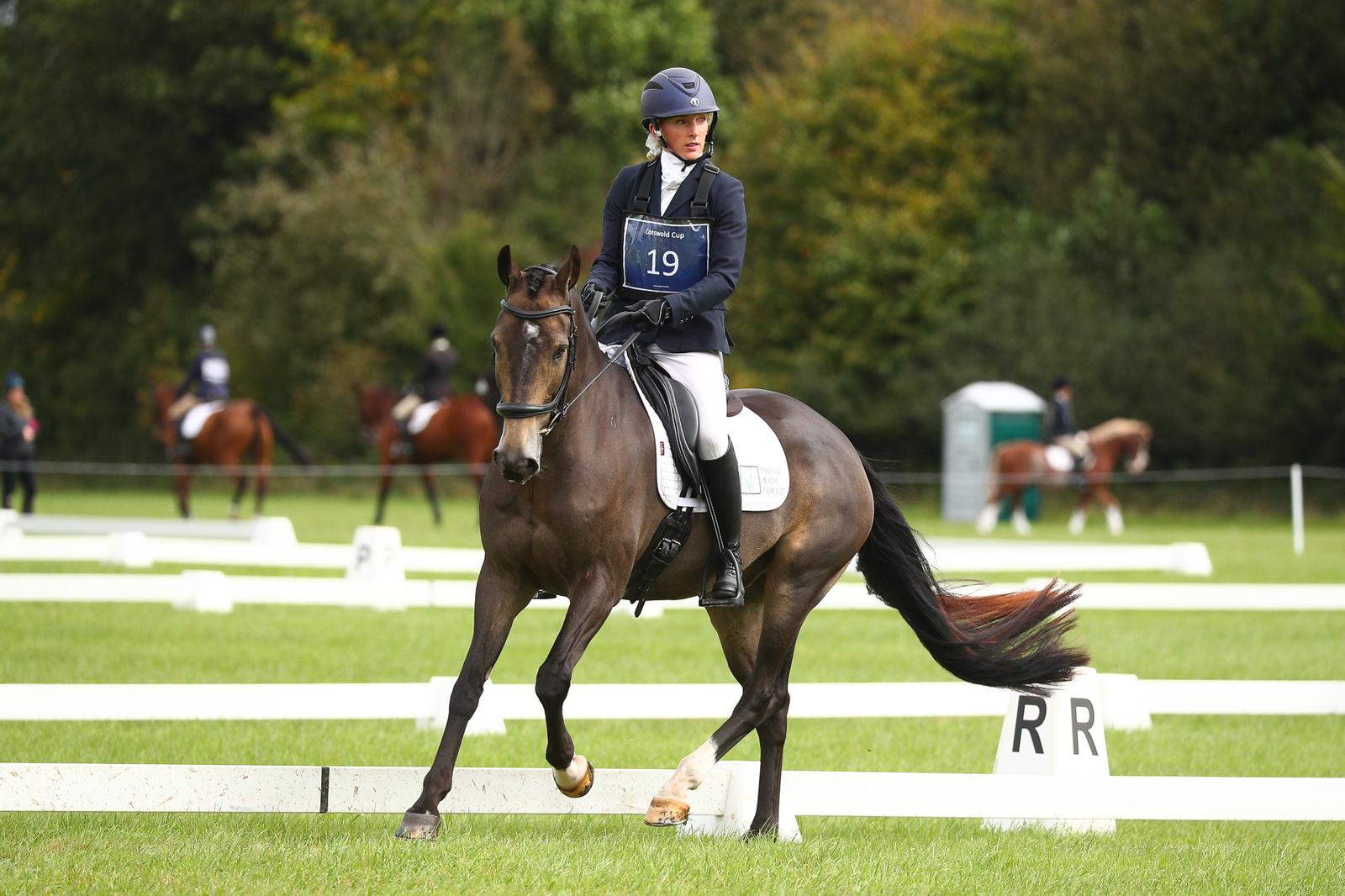
Speed and Endurance Day
The purpose of this day is to test your horsemanship skills from start to finish and the purpose is to end up with the horse in the best possible position to compete as well as he can cross country whilst still leaving enough energy in the tank to show jump successfully on the Sunday, for those doing the 3DE. The 2DE is preparation for the skills required for a 3DE.
This day comprises: Phases A & C (Roads and Tracks)
Phase B – Steeplechase
Ten Minute Hold Box
Phase D – Cross Country
Phases A & C
These are roads and tracks phases and are conducted mainly in trot, they are there to assist you with warming up for phases B (steeplechase and D cross country). You will NOT have access to any warm up fences, the first fence that you jump will be the first fence on the steeplechase. You must be mounted when going through the start and finish flags of phases A & C, but otherwise for the rest of phases A & C you may dismount and walk / run alongside your horse should you so wish. Phase C will always be nearly double the length of Phase A, so you should plan for this being in the region of 30 minutes, with a Phase A that is in the region of 15 minutes.
On these phases you will only receive time faults if you are too slow; and they will be very expensive; 1 penalty for every second over. But if you are far too quick you will be making excessive use of your horse and will make their job harder. For your timings you should be trotting at 220mpm. So, for instance allow 4 minutes a kilometre, and every kilometre will be marked on your route. If you then have a little canter, then that minute will be slightly quicker which will allow you to walk elsewhere and so on. It is advisable to finish Phase A 1 minute earlier than the allotted time, which will be extremely doable. This will then mean that you have 3 minutes between the end of Phase A and the start of Phase B; this is advisable to allow time for a tack check, putting your stirrups if you haven’t already etc. At the end of Phase C, you will have the 10 minute hold box. It is strongly advised that you come in 2 minutes early at the end of Phase C so that you turn the 10 min box into a 12 minute hold box.
Prior to starting out on Phase A it is recommended to have either given your horse a good 20-25 minute walk in hand or to have walked it mounted for at least 20 mins. You need your horse to be sufficiently loosened up but conserving energy is also key. You cannot however expect your horse to come out of the stable and start straight away at the beginning of phase A.
Phase A will have start flags just as you would expect but it is unlikely to have a starting box. You can walk or trot through the start. It does not have to be a standing start like for the cross country. At some point on Phase A you will want to give your horse a short sharp canter in preparation for Phase B. Where you do this is up to you and you can choose an appropriate place when you recce the routes.
The end of Phase B is also the start of Phase C, so you will come off B and gradually bring the horse back to trot and then walk. Understanding how this is flagged is very important for your timings, as all timings that you do for Phase C will have to start and include Phase B as you will not have time to stop and restart your watches. At the end of Kilometre 1 on Phase C your watch will say 4 minutes for the kilometre plus whatever time you took to complete Phase B. Phase B and Phase C are timed differently for competitive purposes, so if you get time faults for going too Copyright for this document is the property of The Cotswold Cup LLP
slowly on Phase B you will need to ensure that you don’t then subsequently end up also getting time faults on Phase C. Again where you walk and trot etc on Phase C is entirely personal choice. You must however trot the last 100 metres of Phase C when approaching the 10 min hold box, in order that people can check that your horse is sound and fit enough to do Phase D.
It is imperative that you walk, ride or cycle Phases A, B and C prior to the Saturday morning, so that know where you are going, you know where the kilometre markers are and so you know where you could have a canter on phase A and where you can walk et on phase C. You should also expect that there will be at least 1 set of directional markers with red and white flags and failure to go through these will result in elimination from the entire competition.
It is wholly advisable to run either two stopwatches throughout phases A to C or to run 1 stopwatch and a normal wristwatch that has an easily visible screen.
For your timings it is advisable to write them down onto blank card and then cover the card in plastic eg a freezer bag and then secure it to your arm with electrical tape. You will not be held on either Phases A or C.
In the event that you are held on Phases B, D or in the ten minute box your timings will be adjusted accordingly.
The 10 Minute Hold Box (aka D Box)
This is a compulsory 10 minute hold for welfare reasons. If you are late off Phase C this will still be 10 minutes. There is a lot to get done in this 10 minutes so your horse and your helpers will be grateful if you come in 2 minutes early off Phase C and make this into a 12 minute box. You will have packed your kit beforehand and delivered it to the box and laid it out in advance.
On entering the box you will immediately dismount and the horse will be checked over by a vet. You will then take your horse to pre-chosen area within the box, which will be your base whilst in the box. Do NOT remove any tack, but you should loosen the girth and any tight nosebands. You will then start by getting water onto the horse to cool it down and bring its temperature down. Try not to get the tack too wet especially the saddle. Ideally someone will walk the horse and keep it walking around whilst another helper washes the horse off and puts water on it. Do not under any circumstances remove the bridle, put the headcollar or chifney on over the top.
During this 10 minutes you also need to check your shoes and tighten up any studs that have come loose. You should have put in any studs that you wish to use prior to the start of Phase A. It is ill-advised to start putting them in for the first time in the 10 minute box. This can be a very busy area and there is already a lot to do in this 10 min period. The ground at Cirencester park is good enough for you to be able to do all 4 phases with studs in. There will be a farrier in or near to the 10 min box, so if you have a problem with a shoe inform him at the earliest possible opportunity, to permit as time as possible to rectify the problem. You must bring spare shoes with you to the 10 minute box; do not put the studs in as the farrier will only have to take them out to put the shoe on. Ideally you will have a helper at the end of Phase B who will check your shoe situation and will inform the farrier prior to arrival at the end of Phase C if there is a problem. If you have an issue with your shoes at the end of Phase B, you are strongly advised to continue to the ten minute box and sort it out there; the ground conditions at Cirencester Park are incredible and the rules do not permit the time on Phase C to be extended to accommodate replacing lost shoes or the equivalent. Copyright for this document is the property of The Cotswold Cup LLP
The end of your 10 min box is your start time on the cross country / Phase D. So you will need to think about getting back on at 3 minutes prior to your start time. You will NOT be allowed to remount until the vet has given the all clear – hopefully at 5 minutes or early. But it is not up to the vet to know your timings and they have many horses to consider, so ensure that you and your helpers are across the timings and check in with the vet as required.
When you have finished Phase D you will return to your spot within the 10 min box to wash off and cool down your horse.
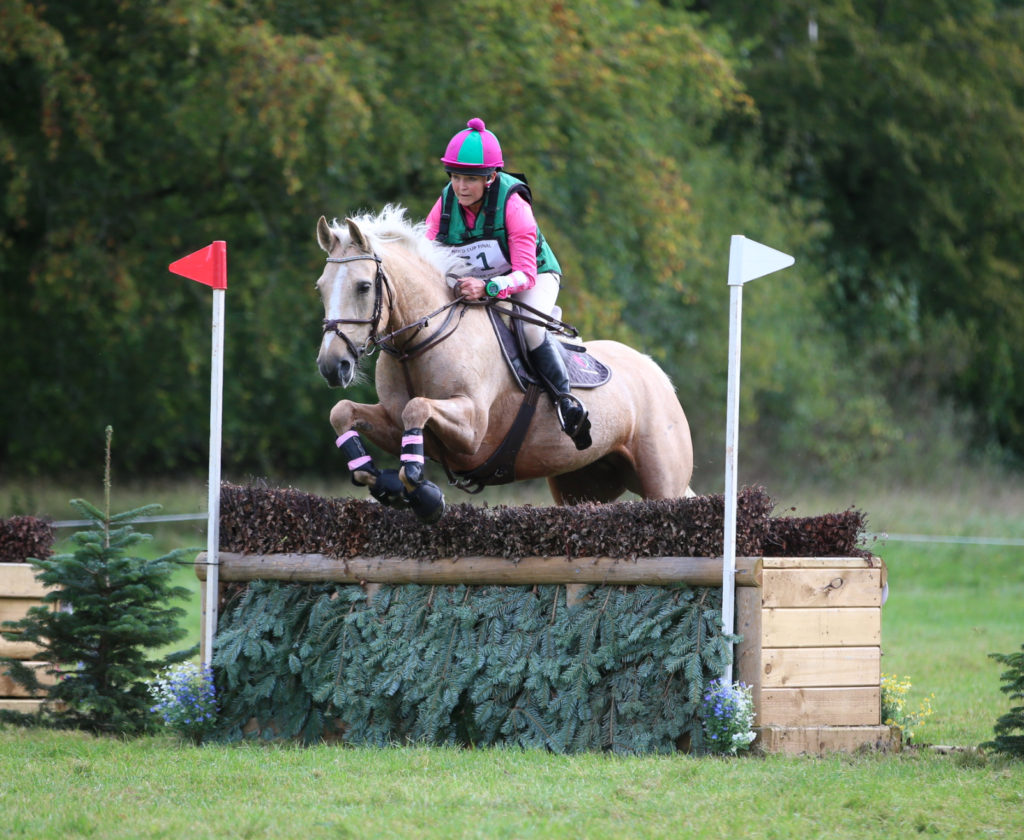
PHASE D – Cross Country
The cross country phase of a championship is designed slightly longer and of greater technicality than your every day course. You should ride the previous three phases with that in mind. At the start of Phase D there will be a starting box just as you would have normally and the countdown will be as normal. However the starting box will be adjacent to the ten minute box, so mounting with 3 minutes to go should give you ample time if you are organised. Make sure you have retightened girths etc before mounting.
Helpers
You will need at least 1 reliable and trustworthy adult helper on Speed and Endurance Day. If you only have 1 helper you will need to be extremely organised and be very aware of your own timings. Ideally the helper will meet you at the end of Phase A / start of B, to check your girth and then they will move to the end of Phase B plus 100ms so that you can ride past them and they can check that you still have all your shoes. The helper then needs to hot foot it back to the 10 min box in order that they are there before you arrive. You should have filled up your water buckets etc before you even start Phase A. You will not be able to communicate with them by phone once you have started so do ensure that your helpers are fully briefed and that they too have recced where they need to be prior to mounting, and that they are fully briefed and equipped with your timings.
10 min box kit list – this kit is best taken to and from the 10 min box in a wheelbarrow or equivalent, which is then left there and used to bring everything back. The more organised you are the easier all of this will be. This list is by no means exhaustive. If you think you might need something then take it with you.
There will be a water bowser in the ten minute box and so will be able to fill all your water buckets up there. You will need to refill them a lot, but you are strongly advised to have filled them prior to starting out on phase A.
- Fold up chair for the rider to sit on
- X4 buckets full of water plus 2 sponges (at least)
- X2 towels – 1 for the horse and 1 for the rider
- Cooler rug
- Lightweight water proof rug
- Full stud kit to include spare studs
- Coat / jacket for rider – to go over your body protector etc
- Spare reins, stirrup leathers, electrical tape, whip.
- Grease plus rubber gloves if you are going to use it (3DE Only)
- Steps if rider needs them to mount
- Headcollar plus leadrope – Chifney if the horse is strong.
- Everything you need for after the xc eg ice, leg wraps etc.
End of Phase D
After the cross country you will bring your horse back to the 10 min box to be washed off and you will only be allowed to take it back to the stables once the vet has signed the horse off as suitably and sufficiently cooled down. Please plan to remove all tack etc at the end of Phase D and come with somewhere / something eg a wheelbarrow to put all your kit into. The vets will check the horses again and give you permission to leave to head back to the stables. If you have any concerns the holding vet will be in contact with the stables vet who can carry out any further checks on returning to the stables.
Saturday evening
It is very tempting to faff with your horse all night on Saturday night. Remember, he has worked hard for you and will want to rest. We recommend a nice hand graze and stroll out a couple of times before tucking him away for the evening. The stables will have a pre-declared time when they will shut for the night and after this point you would only be allowed access in an emergency. This is to ensure that your horses get a time to rest and recuperate ready for Sunday.
Then it’s party time in the main marquee!
Sunday morning
A nice early walk out and check of your horse is advised. That gives the vets plenty of time to assist with anything before they are presented for the second vet’s inspection. You will need to pass this veterinary inspection in order to be allowed to continue on to the showjumping phase.
All competitors will showjump in reverse order with mounted prize givings taking place immediately following completion of the class. You will showjump in the same attire and kit that you would wear normally.
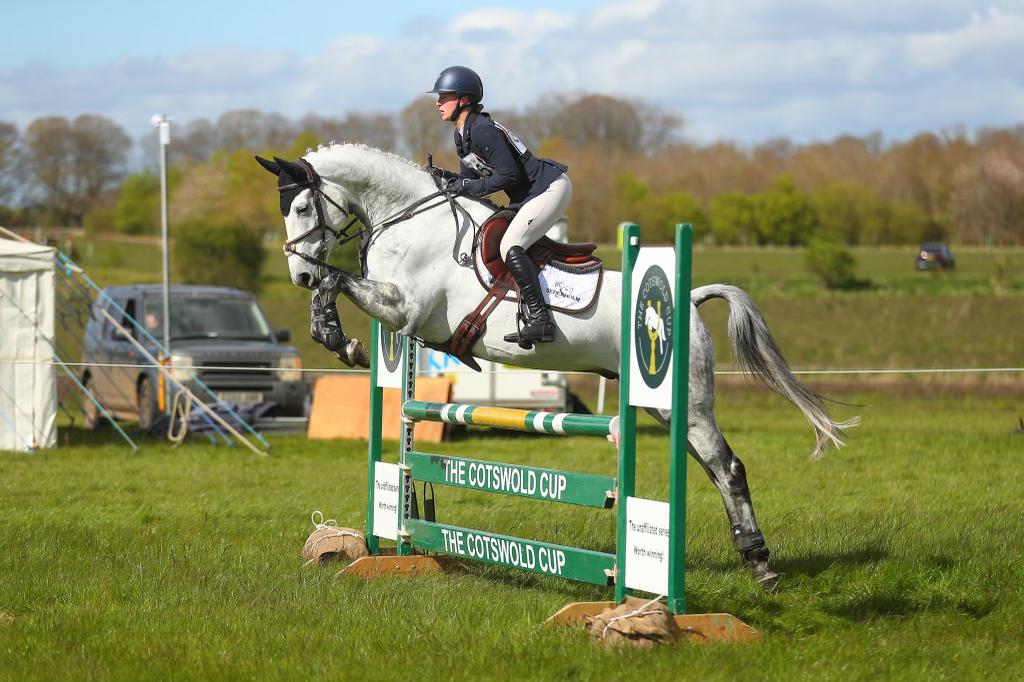
Two–Day Event (no trot-ups)
For those doing the two day event please ONLY consult the parts marked Speed and Endurance Day. Whilst you are not showjumping the following day, the idea of a two day event is to prepare you for a three day event and so the approach to Speed and Endurance day should be identical.
If you are doing the two day event, you will be able to take your horse back to your stable or trailer once the vet at the end of Phase D has cleared you to do so. It is your responsibility to ensure that it is suitably cool enough and settled enough to travel home. If you are required for a prize giving, this will be unmounted in front of the secretary’s tent.
If you are doing the two day event, you will not have any trot ups and whether or not you choose to stable on site it as your discretion.
Copyright for this document is the property of The Cotswold Cup LLP
Our Priority
Our priority (and yours) is the welfare of the horses taking part in this competition. We want you all to have fun and enjoy this unique opportunity but please keep your horse at the forefront of your mind.
Extra Information
We hope the above Champs specific information helps you to feel more comfortable that you and your horse are going to have the best time with us at Cirencester Park – but that’s not all the information we’ve gathered to help you prepare for a stay away event!
For advice on everything from flying through the trot up to feeding and conditioning your horse ready for a 3DE and bio (and tack) security on-site when you’re not at home, hit the button below to head to our BRAND NEW COMPETITOR HUB!
COMPETITOR HUB